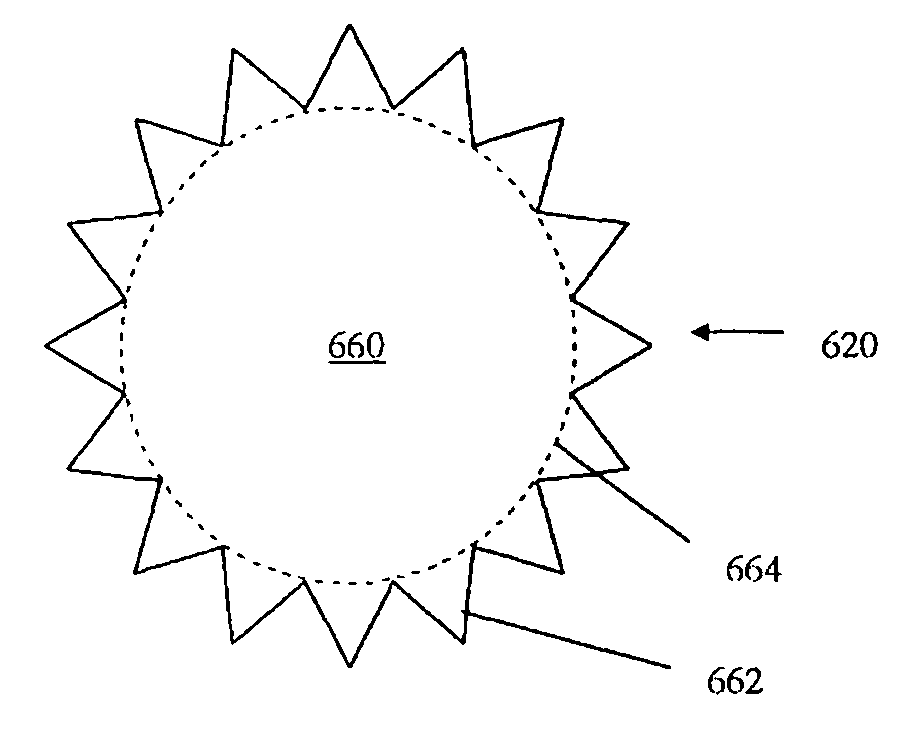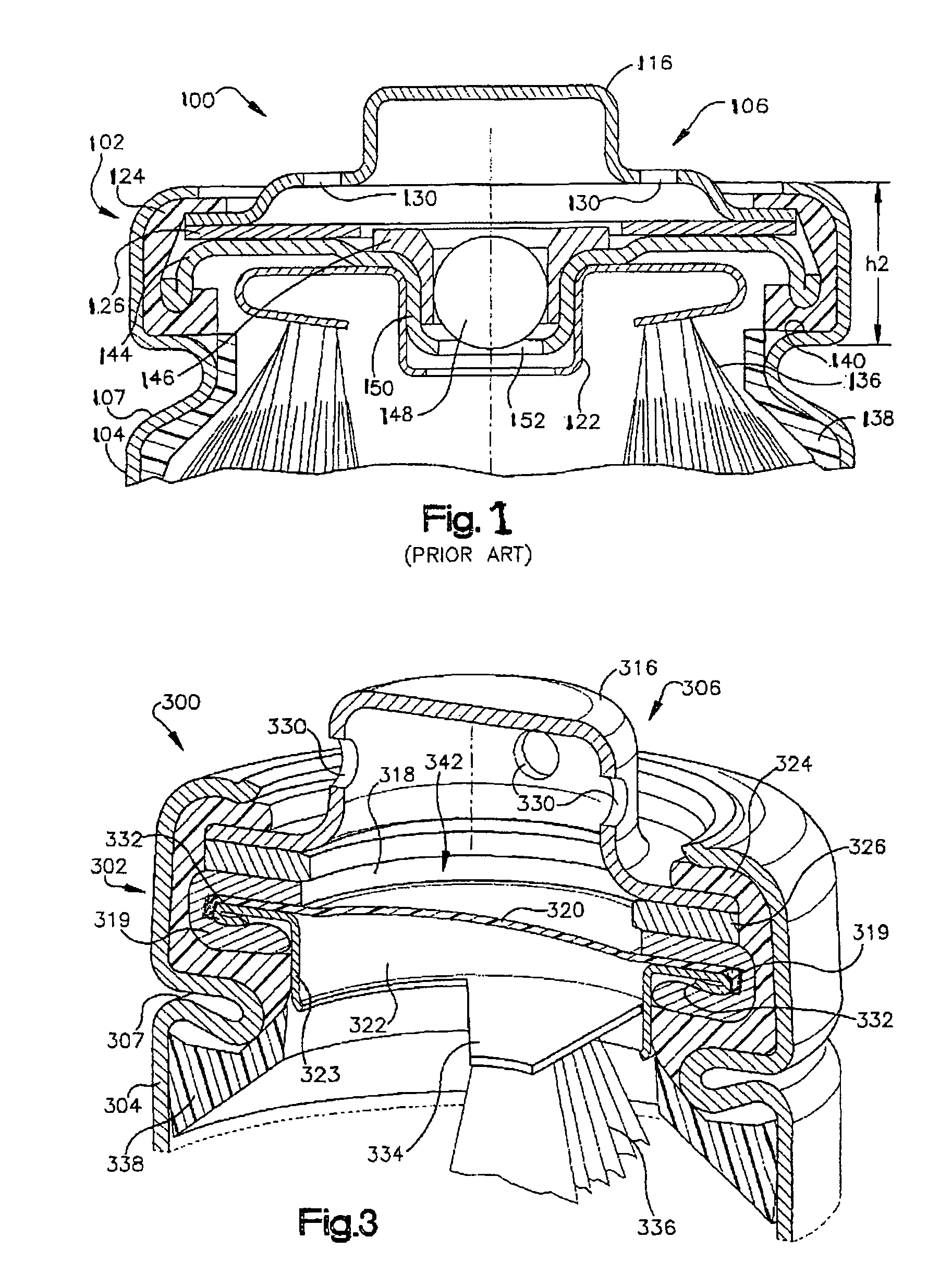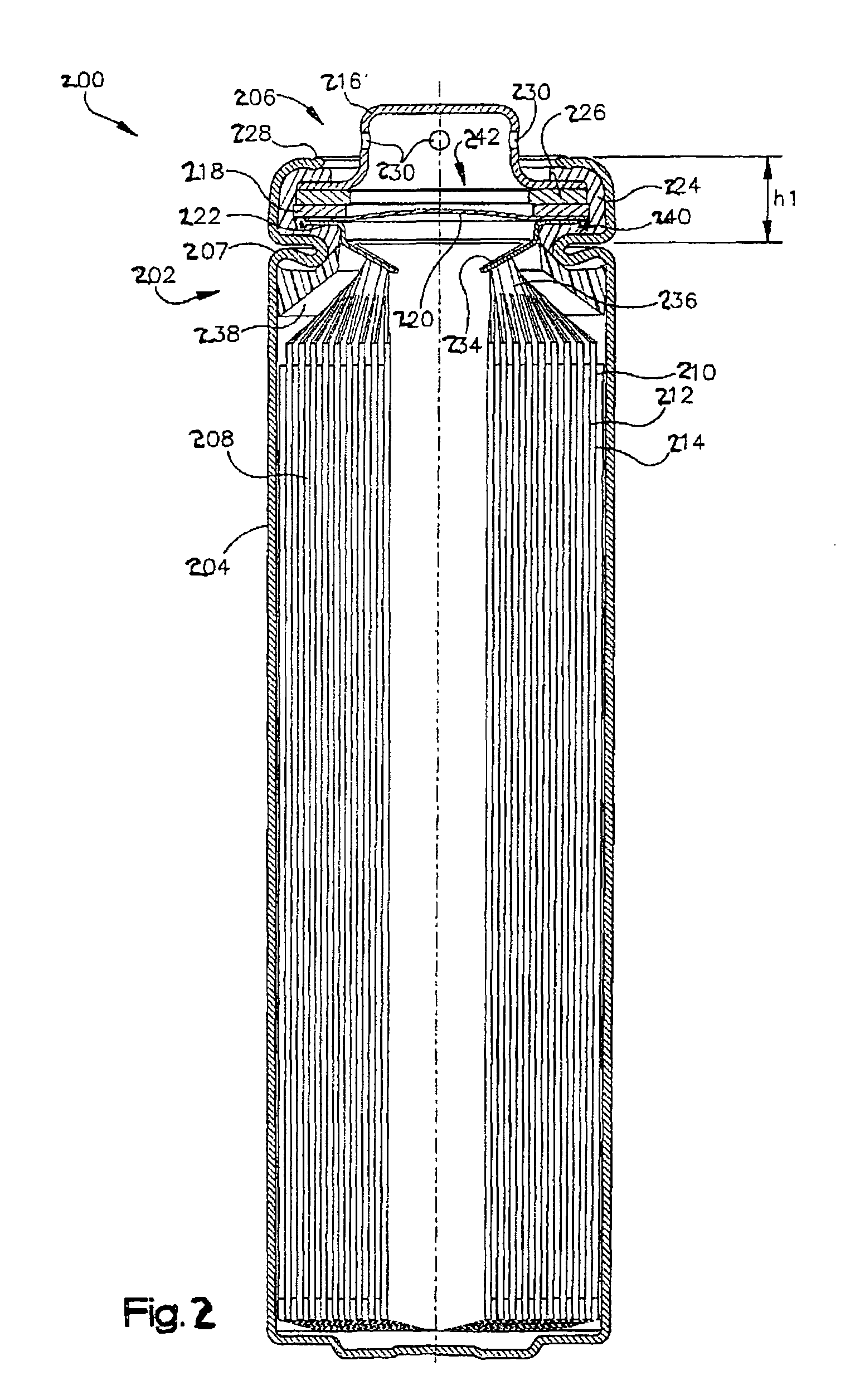Closure vent seal and assembly
a technology of vent seals and assemblies, applied in the direction of cell components, sustainable manufacturing/processing, batteries, etc., can solve the problems of reducing the overall amount of electrochemically reactive materials that may be enclosed within the cell, limiting the ability of the cell to retain its electrolyte, and increasing the cost of the cell
- Summary
- Abstract
- Description
- Claims
- Application Information
AI Technical Summary
Benefits of technology
Problems solved by technology
Method used
Image
Examples
Embodiment Construction
[0025]FIG. 2 shows a cylindrical electrochemical battery cell 200 according to an embodiment of the present invention. Electrochemical battery cell 200 of the present invention has a housing 202 that includes a container 204 and a collector assembly 206. The container 204 has a closed bottom and an open top end that is closed by the collector assembly 206. The container 204 also has a bead 207 that separates the top and bottom portions of the container 204. Disposed within the bottom portion of the container 204 is an electrode assembly 208 that includes a negative electrode or anode 210, a positive electrode or cathode 212, and a separator 214 disposed between the anode 210 and the cathode 212. In the example embodiment shown in FIG. 2, the anode 210, cathode 212 and separator 214 are each thin sheets which are wound together in a spiral, also known as a “jelly roll” design. Electrochemical battery cell 200 is cylindrical, however, one skilled in the art can appreciate that alterna...
PUM
| Property | Measurement | Unit |
|---|---|---|
| open circuit voltage | aaaaa | aaaaa |
| temperature | aaaaa | aaaaa |
| thickness | aaaaa | aaaaa |
Abstract
Description
Claims
Application Information
 Login to View More
Login to View More - R&D
- Intellectual Property
- Life Sciences
- Materials
- Tech Scout
- Unparalleled Data Quality
- Higher Quality Content
- 60% Fewer Hallucinations
Browse by: Latest US Patents, China's latest patents, Technical Efficacy Thesaurus, Application Domain, Technology Topic, Popular Technical Reports.
© 2025 PatSnap. All rights reserved.Legal|Privacy policy|Modern Slavery Act Transparency Statement|Sitemap|About US| Contact US: help@patsnap.com



